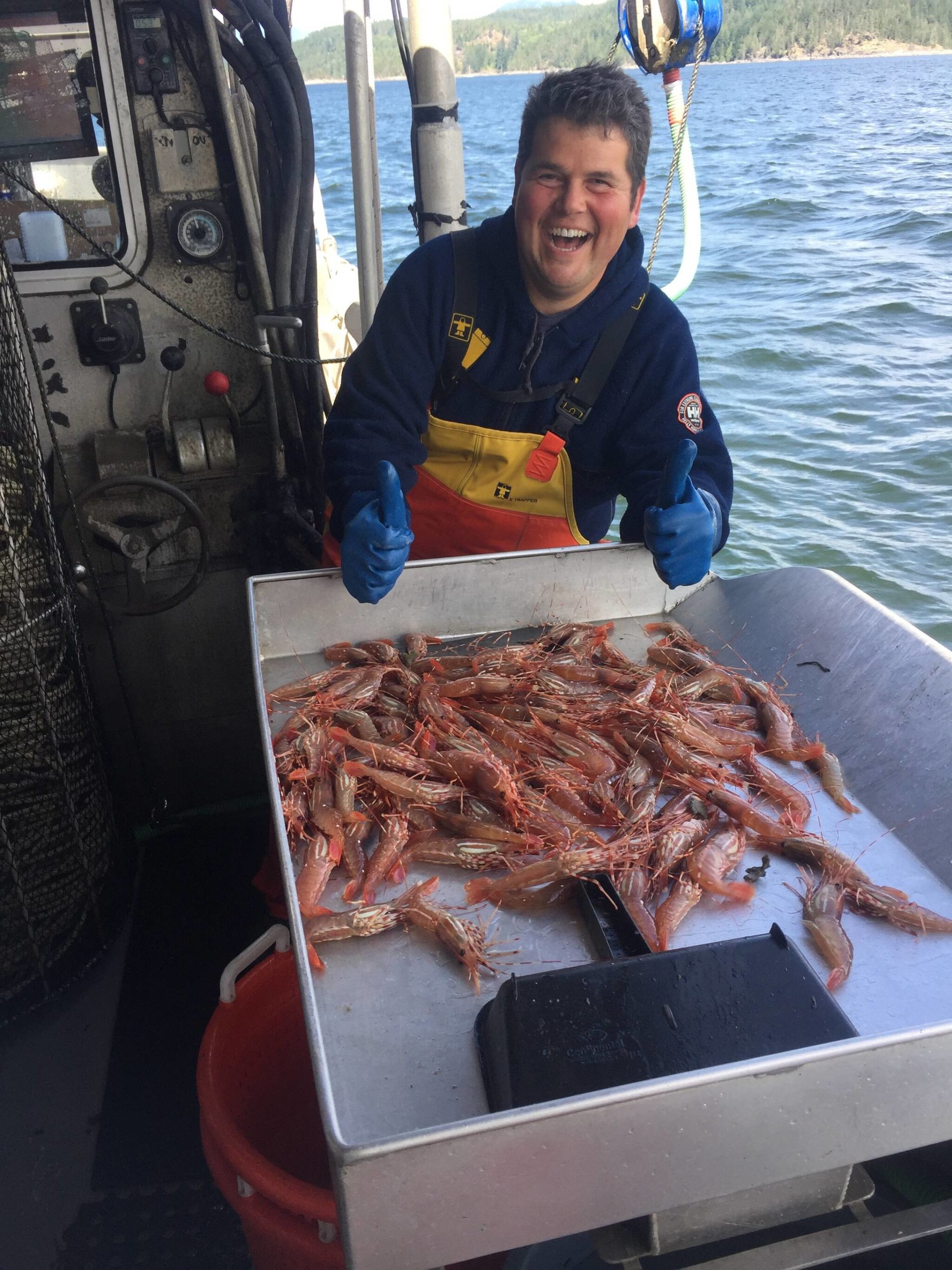Spot prawn harvesters in B.C. are relieved after the Department of Fisheries and Oceans appears to have abandoned ship on some restrictions on the practice of freezing their bounty at sea.
Spot prawns, a species of crustacean coveted for their fleshy tails, represent an important Pacific fishery — an estimated 1,898 tonnes of them were harvested in 2019, per the DFO.
After securing and sorting their catch, many spot prawn harvesters first remove the prawns’ heads, then store tails in plastic containers filled with seawater. These containers are then flash-frozen in specialized low-temperature freezers on their vessels at sea, a practice known as “tubbing.”
In March 2021, DFO said it had reinterpreted regulations, meaning frozen-in-water prawn tails were no longer considered readily available for inspection, as required. This change would have effectively prohibited tubbing.
In response, there was an outcry from prawn harvesters, who said tubbing is vital for them to access domestic markets.
READ ALSO: City of Campbell River supports spot prawn harvesters in their battle against DFO decision
“That could have been catastrophic,” said Zeke Pellegrin, prawn harvester and operator of Highline Fishing, based in Campbell River. “It really would have decimated a big part of what myself and many other fishermen do.”
Soon after, DFO announced it would hold off on any changes for the 2021 season.
Controversy struck again in December 2021, when DFO announced while tubbing would be allowed, but containers in the upcoming season would be limited to eight-ounces. That change presented problems, said Pellegrin.
“You’re talking four or five times the packaging and the waste,” he said. “It wouldn’t have been economically viable, because you would need so much extra labour to procure all containers, and it would have been far more costly.”
READ ALSO: Island MPs slam DFO for not consulting fishery workers
But now, after the Jan. 17 release of a draft DFO management plan for the upcoming prawn and shrimp season (now in a 30-day consultation period), harvesters are heaving a sigh of relief. Under this new plan, they will enjoy ‘status quo’ rules in 2022-23, followed by a requirement in 2023-24 to use transparent, 24-ounce containers.
“The draft 2022-23 Prawn and Shrimp by Trap Integrated Fisheries Management Plan continues our government’s ongoing commitment to enhancing the abundance of the Pacific prawn fishery for future generations,” said Joyce Murray, Minister of Fisheries, Oceans, and the Canadian Coast Guard, in a news release.
“Through our consultations, we heard the need for predictability and were able to reach a workable proposal that provides the industry certainty, while ensuring the fishery’s long-term sustainability.”
Adhering to those new container requirements will be easy for most, said Pellegrin.
“Most of us already use a clear container, and we already use a 24-ounce container — that’s basically the industry standard as is,” he said.
Tubbing is an important practice for selling to local markets, so prawn harvesters are happy the federal government appears to have backtracked on the issue, he said.
“The faster and colder you can freeze something, the less moisture loss and degradation of the quality of the product,” said Pellegrin. “When it’s frozen at sea, that makes the product last so much longer — there isn’t a change in the quality of the product.”
If the practice were to be prohibited or hindered, many harvesters might turn to larger export markets, requiring a different preservative-based processing technique. Prices in these foreign markets can be higher than in domestic markets, but they are also more variable, and accessing them is dependent on a handful of conglomerate wholesalers, said Pellegrin.
“A lot of local people are looking for a sustainably caught, quality organic product,” he said. “So for me, if I can sell at a moderate price locally, that’s better than worrying about the highs and lows of the export market.”
Rachel Blaney, North Island—Powell River MP, said in an interview the proposed rule changes “came out of left field” for the industry.
“The industry has been doing tubbing for a very, very long time, and there’s no indicator that the way they’re doing this is harmful to anyone,” she said.
When demand and trade was disrupted by the COVID-19 pandemic, the practice helped harvesters turn to local markets, said Blaney.
“It was a great pivot for them to be able to start selling more locally — that is really important, because people want to know they can walk down to their nearest dock and get local seafood,” she said. “It’s also good for the environment, because they’re not having to send it off anywhere, and it helps the pockets of small business owners within our region.”
READ ALSO: 3 million pounds of flash frozen, delicious prawns sitting in B.C. cold storage
Blaney acknowledge the efforts of Emily Orr, Prawn Industry Caucus lead representative, for helping to further the issue.
“We worked really closely — we started a petition, we had a lot of people engaging, and we were able to get that to the Minister’s office,” said Blaney. “After the election, we were really hoping a good decision would come out of there — there was some hesitancy, and then finally, they made a really good decision.”
Blaney called the decision “a really good win” and said she hopes the DFO will engage key stakeholders to achieve better outcomes.
“I hope that the process they have now taken, which is a lot more consultative and understanding, will allow them to make good decisions,” she said. “Now people can get back to work.”
sean.feagan@campbellrivermirror.com
Like us on Facebook and follow us on Twitter

